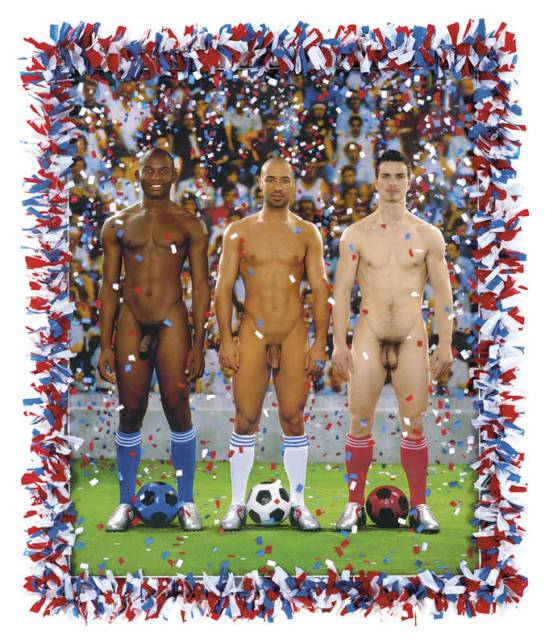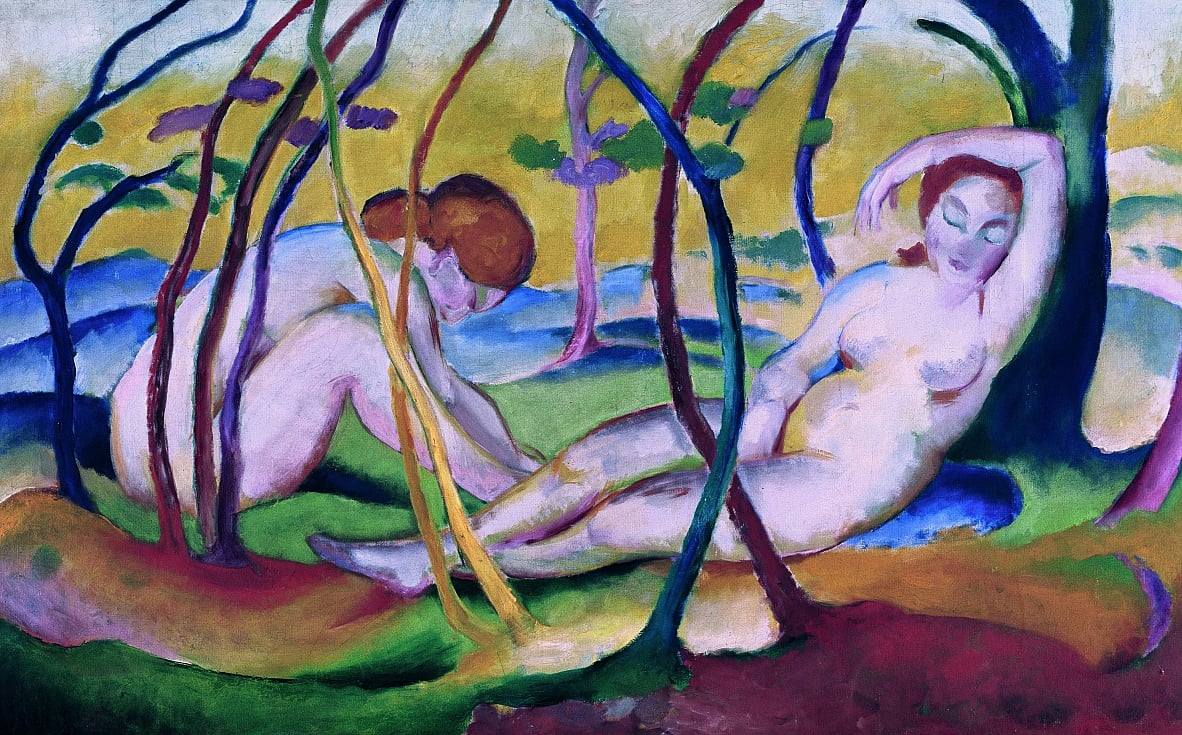
The Best Male Nudes in Art History
Female nudes and male nudes share a common theme that spans eras and cultures. They are imbued with the canons of beauty and social norms, as much as they are shaped by them. Between emblematic paintings and hyperrealistic sculpture, discover the works that have marked male nudes in art!
1. The Vitruvian Man, a male nude between science and philosophy

As one of the most famous nudes in the world, The Vitruvian Man is emblematic of Renaissance thought. This work is also known as The Perfect Man. A male nude painting in which humanity is at the center of the world, idealized and unassailable. The use of the golden ratio only supports this glorification. Leonardo da Vinci generously used it to represent a body of perfect proportions. This painting brought a new dimension to male nudes in art.
2. The Walking Man, a great step for the history of male nudes in art

Age of Bronze, The Thinker, The Awakening Man… Male nudes created by Auguste Rodin is as numerous as his works are essential. With The Walking Man, the sculptor marked a decisive turning point in the artistic representation of the body. By designing this nude without face and without arms, Rodin questions beauty and reverses academic aesthetic codes. It is no longer the subject that is the work, but its pure creation. A sculpture that remains today the symbol of movement.
3. Arch of hysteria, a questioning of gender identities

A real UFO within the art of the male nude, Arch of hysteria questions our relationship to gender identities. First, because it is at first sight difficult to know if it is a male or female body. Then, because this arched, stretched, twisted body echoes the work of French neurologist, Jean-Martin Charcot. Throughout the 19th century, this doctor, known as the founder of neurology, worked on hysteria as a strictly female pathology. However, the male body is here in full “phase of contortions”, the first stage of hysteria. With this sculpture, Louise Bourgeois overturns Charcot’s theory and questions our relationship to gender.
4. Wild Man, paradox and vulnerability in male nudes in art

Known for his hyper-realistic and colossal sculptures, Ron Mueck upsets the spectators as much as the codes of contemporary art. And his incredible Wild Man is no exception to the rule: a gigantic naked man, whose anxiety is palpable. From the top of its three meters, this man confronts us with many paradoxes. By his size, he frightens as much as he is frightened. He overhangs us, but it seems that we can dominate him. Its vulnerability is as remarkable as its power. It inspires both deep empathy and undeniable rejection. More than that, this sculpture offers an incredibly authentic – and vulnerable – representation of masculinity. It’s a new look that disrupts the classic approach to the male nude.
5. Vive la France, joy and aestheticism at Pierre et Gilles

How can we talk about the male nude without mentioning Pierre et Gilles? In love with popular imagery and fascinated by aesthetic perfection, they enchant us with their multiple portraits of men and women. Without specializing in the nude, the two artists have developed and perfected an almost orgasmic approach. A mixture of photography and painting, their works are an ode to universal love and optimism. Vive la France is a perfect example of this perfectionist, humorous and humanistic approach. The three footballers are then placed as heirs and modern heroes of a joyful, open, sparkling France.
Male nudes in art, a witness of changes in moral and in the culture
As a raw representation, the male nude crystalizes many aesthetic, moral and societal reflections. Through the centuries, it is therefore an excellent testimony of questioning standards and changes in moral codes. And you, what’s your favorite nude male work?

About Artsper
Founded in 2013, Artsper is an online marketplace for contemporary art. Partnering with 1,800 professional art galleries around the world, it makes discovering and acquiring art accessible to all.
Learn more












